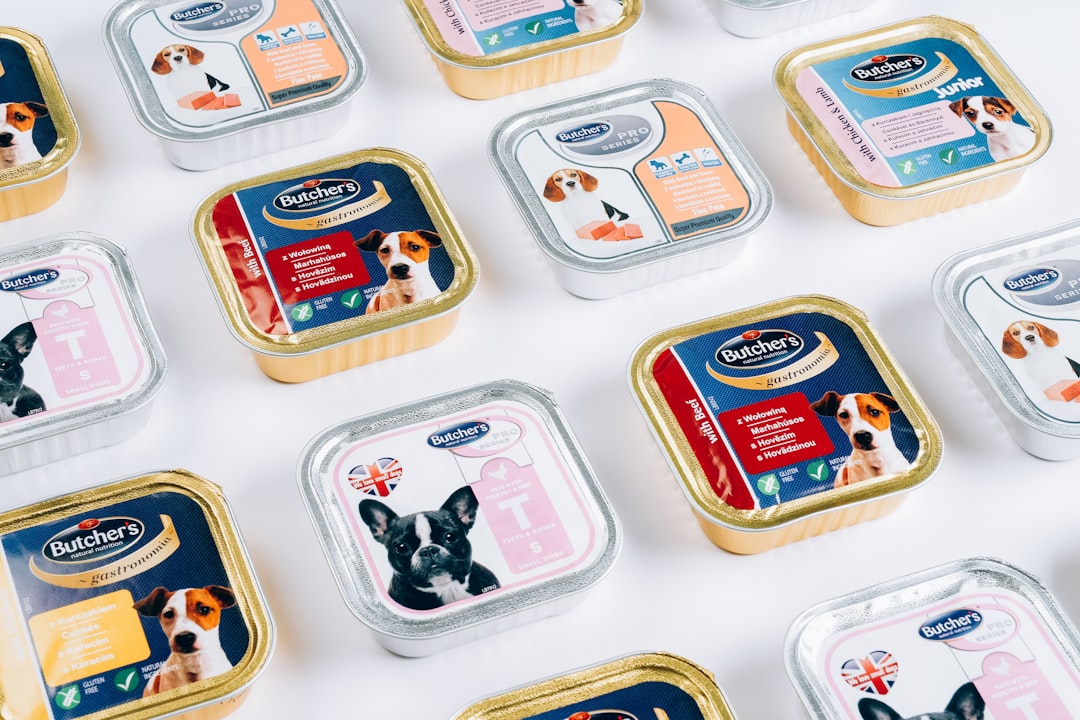As a dog owner, it is essential to grasp the fundamental nutritional requirements of your furry friend. Dogs, like humans, require a balanced diet to thrive, which includes proteins, carbohydrates, fats, vitamins, and minerals. Each of these components plays a crucial role in maintaining your dog’s overall health.
Proteins are vital for muscle development and repair, while fats provide energy and support healthy skin and coat. Carbohydrates serve as a source of energy and aid in digestion, while vitamins and minerals are necessary for various bodily functions, including immune support and bone health. To ensure that your dog receives the right balance of nutrients, you must consider their specific needs based on factors such as age, breed, size, and activity level.
Puppies, for instance, require more protein and calories to support their rapid growth and development. Adult dogs need a balanced diet to maintain their health and energy levels, while senior dogs may benefit from diets that are lower in calories but higher in fiber to support digestion. By understanding these nutritional needs, you can make informed decisions about your dog’s diet that will promote their well-being and longevity.
Key Takeaways
- Understanding your dog’s nutritional needs is essential for their overall health and well-being.
- Reading and understanding dog food labels can help you make informed decisions about the food you feed your dog.
- Different types of dog food, including dry, wet, raw, and homemade, offer various benefits and considerations for your dog’s diet.
- Common allergens and fillers to avoid in dog food include wheat, corn, soy, and artificial preservatives.
- Considering your dog’s age, size, and activity level is crucial for determining their dietary requirements.
Reading and Understanding Dog Food Labels
Navigating dog food labels can be a daunting task, but it is crucial for making informed choices about your pet’s diet. The first step is to familiarize yourself with the ingredients list, which is typically arranged in descending order by weight. This means that the first few ingredients are the most significant components of the food.
Look for high-quality protein sources, such as chicken or beef, listed at the top of the list. Avoid foods that list vague terms like “meat by-products” or “animal fat,” as these can indicate lower-quality ingredients. In addition to the ingredients list, pay attention to the guaranteed analysis section of the label.
This section provides information on the minimum percentages of crude protein and fat, as well as the maximum percentages of fiber and moisture. Understanding these values can help you assess whether the food meets your dog’s specific nutritional needs. Furthermore, look for any additional certifications or endorsements from reputable organizations, which can provide further assurance of the food’s quality and safety.
Different Types of Dog Food: Dry, Wet, Raw, and Homemade

When it comes to dog food, you have several options to choose from: dry kibble, wet food, raw diets, and homemade meals. Each type has its advantages and disadvantages, so it’s essential to consider what works best for you and your dog. Dry kibble is often the most convenient option; it has a long shelf life, is easy to store, and can help maintain dental health by reducing plaque buildup.
However, not all kibble is created equal; some brands may contain fillers or low-quality ingredients. Wet food can be an excellent choice for dogs who are picky eaters or need extra hydration in their diet. It typically contains higher protein levels and fewer carbohydrates than dry food.
However, it can be more expensive and has a shorter shelf life once opened. Raw diets have gained popularity among some dog owners who believe that feeding their pets a diet closer to what they would eat in the wild is healthier. While raw diets can provide high-quality nutrition, they also come with risks related to bacterial contamination and nutritional imbalances if not properly managed.
Lastly, homemade meals allow you to control every ingredient that goes into your dog’s food but require careful planning to ensure that all nutritional needs are met.
Common Allergens and Fillers to Avoid in Dog Food
| Allergen/Filler | Description | Potential Effects |
|---|---|---|
| Wheat | Common filler, potential allergen | Digestive issues, skin problems |
| Corn | Common filler, potential allergen | Digestive issues, skin problems |
| Soy | Common filler, potential allergen | Digestive issues, skin problems |
| Dairy | Potential allergen | Digestive issues, skin problems |
| Artificial colors | Added for visual appeal | Potential allergic reactions |
As you delve deeper into your dog’s dietary needs, it’s crucial to be aware of common allergens and fillers that can negatively impact their health. Many dogs suffer from food allergies or sensitivities that can lead to gastrointestinal issues, skin irritations, or other health problems. Common allergens include ingredients like wheat, corn, soy, dairy, and certain proteins such as chicken or beef.
If you notice signs of allergies in your dog—such as itching, excessive scratching, or digestive upset—it may be worth exploring a limited-ingredient diet or consulting with your veterinarian. Fillers are another concern when selecting dog food. These are ingredients that provide little nutritional value but are included to bulk up the food or reduce production costs.
Common fillers include corn gluten meal, soy protein isolate, and artificial preservatives or colors. While some fillers may not be harmful in small amounts, they can contribute to an imbalanced diet if they make up a significant portion of your dog’s food. By choosing high-quality dog food with minimal fillers and allergens, you can help ensure that your pet receives the nutrition they need without unnecessary additives.
Considering Your Dog’s Age, Size, and Activity Level
Your dog’s age, size, and activity level play a significant role in determining their dietary needs. Puppies require a diet rich in calories and nutrients to support their rapid growth and development. As they transition into adulthood, their caloric needs will stabilize but will still vary based on their size and activity level.
Larger breeds may require different formulations than smaller breeds due to differences in metabolism and growth rates. Active dogs will need more calories than those who lead a more sedentary lifestyle. If your dog participates in regular exercise or has a high energy level, consider providing them with a diet formulated for active dogs that includes higher protein levels to support muscle maintenance and energy needs.
Conversely, senior dogs may benefit from lower-calorie diets that focus on joint health and digestive support as they age. By tailoring your dog’s diet to their specific life stage and lifestyle, you can help them maintain optimal health throughout their life.
Consulting with a Veterinarian for Dietary Recommendations

Personalized Dietary Recommendations
Veterinarians have extensive knowledge about canine nutrition and can provide personalized recommendations based on your dog’s unique needs. They can help you identify any specific dietary requirements or restrictions based on your dog’s health status or any pre-existing conditions.
Safe Transition and Portion Control
In addition to providing dietary recommendations, your veterinarian can also guide you on how to transition between different types of dog food safely. They can help you determine the appropriate portion sizes for your dog based on their weight and activity level while also advising you on any necessary supplements that may enhance their diet.
Regular Monitoring and Adjustments
Regular check-ups with your veterinarian will allow you to monitor your dog’s health over time and make adjustments to their diet as needed.
Introducing New Foods and Making Dietary Changes
When introducing new foods into your dog’s diet or making dietary changes, it’s essential to do so gradually to avoid gastrointestinal upset. A sudden change in diet can lead to diarrhea or vomiting as your dog’s digestive system adjusts to new ingredients. Start by mixing a small amount of the new food with their current food over several days, gradually increasing the proportion of the new food while decreasing the old one.
Monitoring your dog during this transition period is crucial. Keep an eye out for any signs of discomfort or adverse reactions such as changes in stool consistency or behavior changes. If you notice any issues during the transition process, consult with your veterinarian for guidance on how to proceed.
By taking a gradual approach to dietary changes, you can help ensure that your dog adapts well to their new food while minimizing any potential digestive issues.
Monitoring Your Dog’s Health and Adjusting Their Diet as Needed
Once you’ve established a diet for your dog, it’s important to continue monitoring their health and making adjustments as needed. Regularly assess your dog’s weight and body condition score; if they are gaining or losing weight unexpectedly, it may be time to reevaluate their diet or portion sizes. Additionally, keep an eye on their energy levels and overall demeanor; changes in behavior can sometimes indicate dietary deficiencies or sensitivities.
If you notice any concerning symptoms—such as persistent vomiting, diarrhea, or changes in appetite—don’t hesitate to consult with your veterinarian for further evaluation. They may recommend dietary adjustments or additional tests to identify any underlying issues. By staying vigilant about your dog’s health and being willing to adapt their diet as necessary, you can help ensure they lead a happy and healthy life for years to come.
If you’re looking for tips on effective puppy training techniques, you may want to check out this article on doggylifetips.com. It offers valuable advice for new dog owners who want to ensure their furry friends are well-behaved and happy. Mastering dog crating is also an important aspect of training, and this article provides helpful tips for success. And if you’re wondering about what foods are safe for your dog to eat, including tangerine peel, be sure to read this informative article on doggylifetips.com.
FAQs
What is dog food?
Dog food is a specially formulated food designed to meet the nutritional needs of dogs. It typically contains a balance of protein, carbohydrates, fats, vitamins, and minerals to support a dog’s overall health and well-being.
What are the different types of dog food?
There are several types of dog food available, including dry kibble, wet canned food, semi-moist food, and raw or homemade diets. Each type has its own advantages and may be suitable for different dogs based on their individual needs and preferences.
How do I choose the right dog food for my pet?
When choosing a dog food, it’s important to consider your dog’s age, size, activity level, and any specific health concerns. Look for a dog food that is labeled as “complete and balanced” by the Association of American Feed Control Officials (AAFCO) to ensure it meets your dog’s nutritional requirements.
What should I look for in the ingredients of dog food?
Quality dog food should list a high-quality source of protein, such as meat, poultry, or fish, as the first ingredient. It should also contain a balance of carbohydrates, healthy fats, and essential vitamins and minerals. Avoid dog foods that contain artificial colors, flavors, and preservatives.
How much dog food should I feed my pet?
The amount of dog food to feed your pet will depend on their age, size, activity level, and metabolic rate. It’s important to follow the feeding guidelines provided on the dog food packaging and adjust the portion sizes as needed based on your dog’s individual needs and any guidance from your veterinarian.
